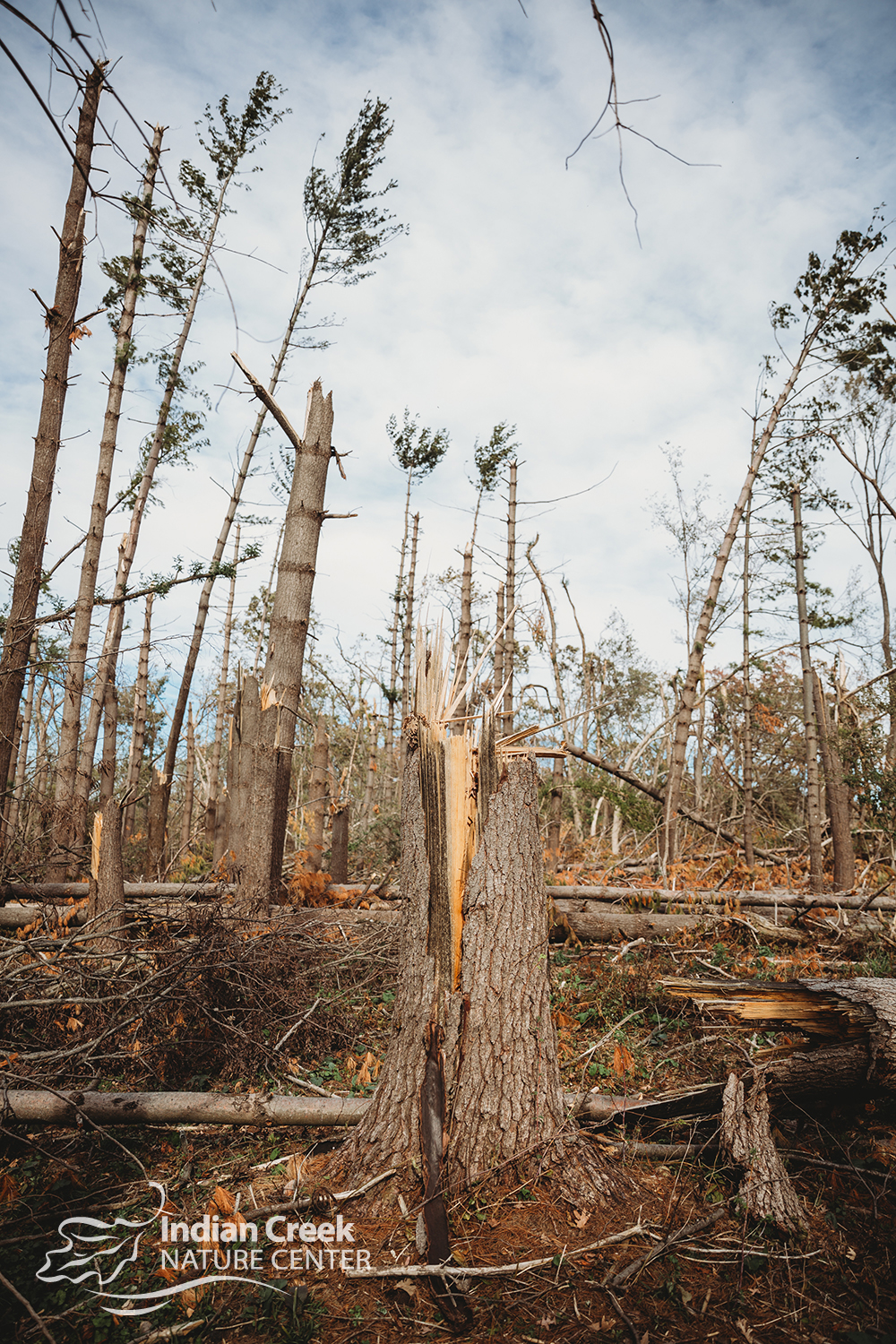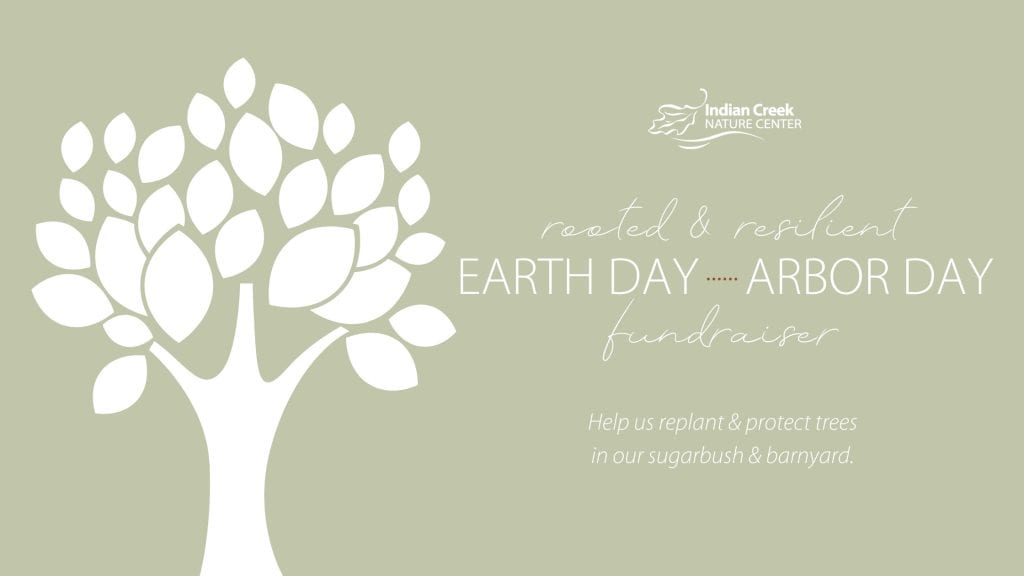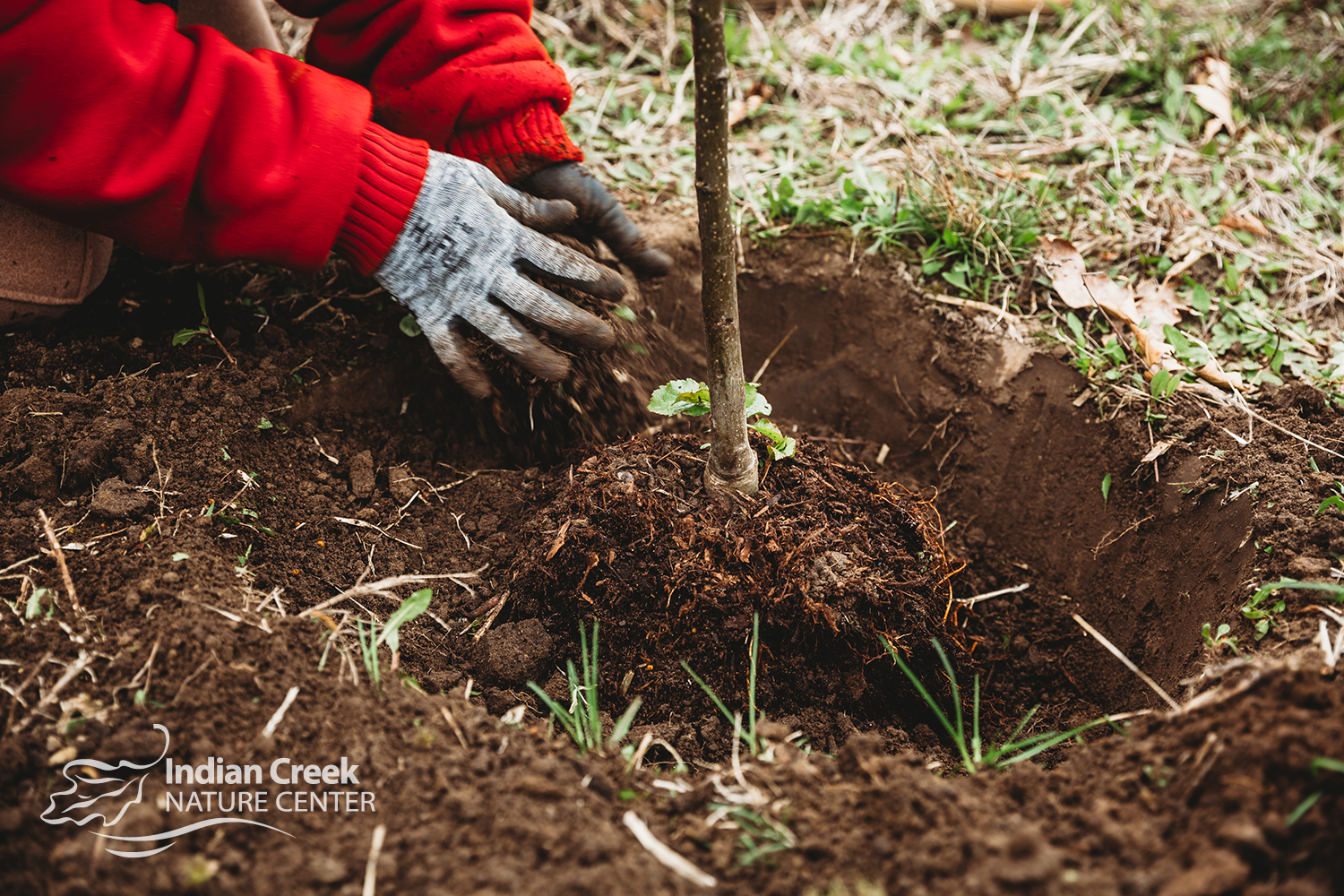 If you visit the Nature Center, the devastation of the August 2020 derecho remains a very visible, not-so-distant memory. The winds tore apart the trees in August, leaving debris and hanging limbs that are still present today, and have temporarily prevented the re-opening of some of our trails.
If you visit the Nature Center, the devastation of the August 2020 derecho remains a very visible, not-so-distant memory. The winds tore apart the trees in August, leaving debris and hanging limbs that are still present today, and have temporarily prevented the re-opening of some of our trails.
But nature is resilient, and there is hope.
In the empty space where trees once were, there is now sunlight for wildflowers and new trees to grow. Where the forest was previously shaded, there is now light. Many of the trees lost at Indian Creek Nature Center were cottonwood trees in the floodplain, invasive black locust trees and fragile pines in the uplands. Our goal has always been to maintain a healthy, sustainable forest, and that has not changed. What has changed is our land management strategy and the areas we are prioritizing.

One of those priorities is to replenish and maintain the maple sugarbush near Penningroth Barn, as well as the barnyard area that lost a number of trees, including several old oaks, black walnuts, maples, Norway spruces, cedar trees, an Ohio buckeye and three flowering crabapples. Every few years we have planted sugar maples and black maples in the area to create the next generation of trees to produce maple syrup. Many of the young trees and saplings in the barnyard are still intact and healthy, and we hope to nurture them to maturity by protecting them and/or possibly relocating them.
The plan includes:
- Planting 7 maples, putting mulch and deer guards around them.
- Protecting young maples from previous plantings.
- Relocating the apiary to Etzel Sugar Grove Farm, removing the shed and damaged hoop house, converting the area back to prairie and woodland as appropriate.
- Protecting young trees and saplings in the barnyard.
 Purchasing, planting & protecting two to three northern pecans and three persimmons.
Purchasing, planting & protecting two to three northern pecans and three persimmons.
The total hard costs for this project add up to roughly $2500, and that only covers the costs of purchasing the trees, tree guards, mulch and prairie seed. Many of our ongoing land restoration projects, including tree plantings, are labor and time intensive. For example, it may take an hour or two to plant a tree, but the commitment to that tree is much longer. It will need to be regularly watered for the first three to five years, as well as protected with mulch and tree guards, which will need to be maintained for the next decade or two. Branches will need to be pruned. It is a long-term investment in time and resources.
This is where YOU can help.
From April 22 (Earth Day) to April 30 (Arbor Day), we will be collecting donations for our Rooted & Resilient Fundraiser. By giving to this initiative, you will help fund re-planting and ongoing land restoration projects at the Nature Center. We hope to raise $3000, and we welcome donations of all sizes to reach that goal (or beyond!). Consider the following giving levels:
- Soil: MAKE IT MONTHLY — $10 monthly donation
 Healthy soil is the foundation for healthy roots. Keep us rooted & resilient with a recurring monthly donation — whether it’s $10 a month or more, your recurring donation is a commitment to support not only this project, but ongoing land restoration at the Nature Center.
Healthy soil is the foundation for healthy roots. Keep us rooted & resilient with a recurring monthly donation — whether it’s $10 a month or more, your recurring donation is a commitment to support not only this project, but ongoing land restoration at the Nature Center. - Earthworm: $20
- Seed: $50
- Sprout: $100
- Sapling: $250
- Tree: $500
Help us reach our goal by sharing this fundraiser with friends, family & other Champions of Nature!
We will be posting on social media all week, as well as sending email updates. Please feel free to forward these, or to share in your own way. We’d love to hear your story — are you a “soil” giver? An “earthworm”? A “tree”?! Tell your friends why you gave to inspire them to give, too!


 Purchasing, planting & protecting two to three northern pecans and three persimmons.
Purchasing, planting & protecting two to three northern pecans and three persimmons. 

